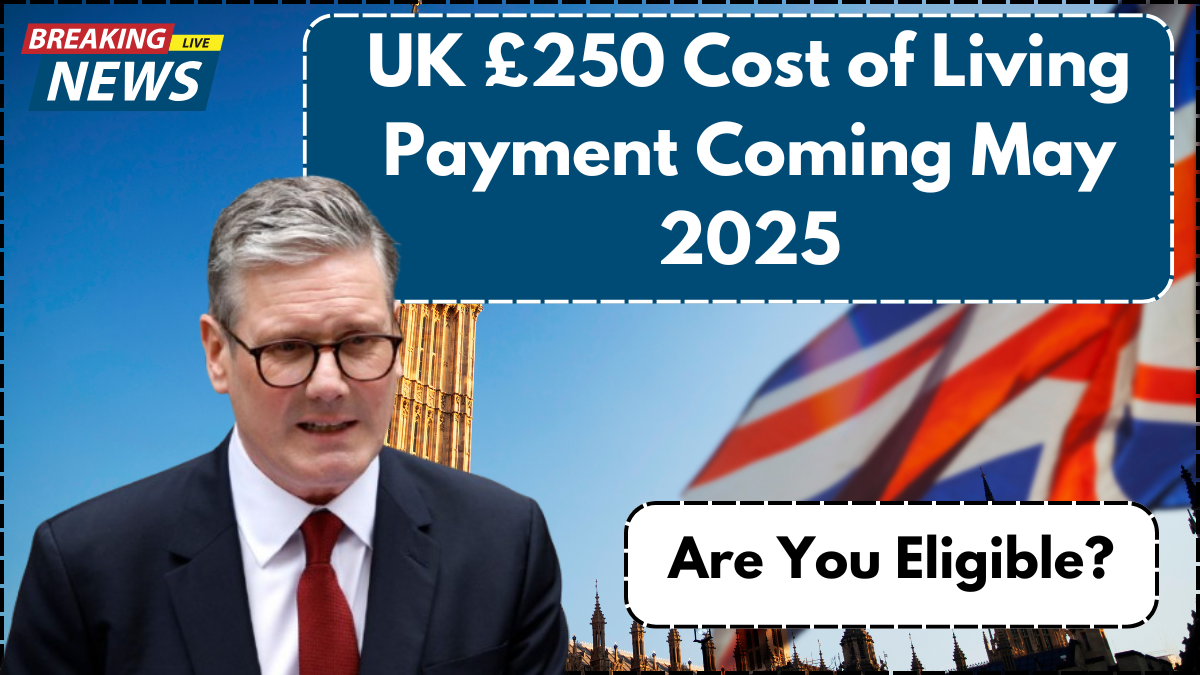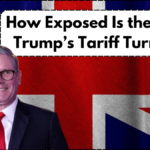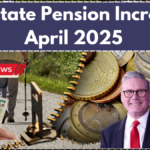To alleviate the ongoing financial pressure caused by inflation, soaring energy bills, and food price hikes, the UK government is issuing a one-off £250 support payment. Rolling out in April 2025, this initiative is part of a broader effort to protect vulnerable households across the country from the persistent cost of living crisis. This financial aid will reach millions of individuals and families who meet specific eligibility criteria.

Who Is Eligible for the April 2025 £250 Payment?
The payment targets groups most affected by current economic conditions. These include:
Recipients of Means-Tested Benefits
Individuals receiving government support through means-tested benefits will receive the payment automatically. Eligible benefits include:
- Universal Credit
- Pension Credit
- Income Support
- Jobseeker’s Allowance (income-based)
- Employment and Support Allowance (income-based)
- Working Tax Credit
- Child Tax Credit
Pensioners
Pensioners already claiming Pension Credit are automatically eligible. Those of state pension age who have not yet applied for Pension Credit are strongly encouraged to do so promptly, as a successful claim could entitle them to this and additional benefits.
Disabled Individuals
Claimants of disability-related benefits may also be eligible. These benefits include:
- Personal Independence Payment (PIP)
- Disability Living Allowance (DLA)
- Attendance Allowance Eligibility may require further documentation, such as recent medical assessments, especially if assessed by local councils.
Low-Income Households Not Receiving Benefits
Households with limited income and savings under £2,000 may qualify even if they do not receive government benefits. Local councils will review factors including household income, number of dependents, and monthly financial obligations.
Payment Distribution Process
The method of payment depends on your current benefit status and income situation:
| Payment Method | Eligible Recipients | Action Required |
|---|---|---|
| Automatic Bank Transfer | Individuals on means-tested benefits | None; funds will be deposited directly |
| Manual Application | Low-income individuals not on benefits | Must apply through local council |
Manual Application Procedure
Those who need to apply manually should follow these steps:
- Assess Your Finances – Determine if your income and savings meet your local council’s eligibility criteria.
- Find Your Local Council – Visit the official UK government website to access your council’s contact information.
- Review Council Guidelines – Understand the documentation and eligibility standards specific to your region.
- Prepare Your Application – Gather proof of income, ID, utility bills, and any relevant medical documents.
- Submit the Form – Apply via your council’s official portal or physical office.
- Wait for a Decision – Processing can take between two to six weeks.
The Household Support Fund (HSF)
The one-off £250 payment is part of the extended Household Support Fund, which has now been guaranteed until March 2026. The HSF gives councils the autonomy to address their community’s most urgent needs. This allows local authorities to allocate funds flexibly to the most vulnerable residents, whether through food vouchers, energy bill support, or one-off payments.
Additional Financial Support Available
The government has several ongoing schemes designed to cushion households from financial strain:
- Winter Fuel Payment: Ranges from £250 to £600, depending on age and circumstances.
- Cold Weather Payment: Provides £25 per week when temperatures fall below freezing for seven consecutive days.
- Warm Home Discount: Offers a one-time £140 discount on electricity bills for eligible households.
- Council Tax Reduction: Lowers council tax bills for those on low incomes or benefits.
Why Immediate Action Matters
Applying early ensures timely receipt of funds. Incomplete or delayed applications may extend the wait for much-needed support. Councils may stop accepting applications once their allocated funds are exhausted, making it critical to act without delay.
Conclusion
The April 2025 £250 cost of living payment is a crucial measure to support vulnerable households during a period of economic uncertainty. By understanding eligibility requirements and acting quickly, individuals can secure financial relief. Additionally, exploring other government assistance programs may help reduce overall financial stress.
FAQ
Who will automatically receive the £250 payment?
Anyone receiving a qualifying means-tested benefit, such as Universal Credit or Pension Credit, will receive the payment directly without needing to apply.
Can I still apply if I don’t get benefits?
Yes. If you have a low income and minimal savings, you can apply through your local council.
What documents do I need for the manual application?
You should prepare proof of identity, income, savings, household expenses, and any relevant medical documents if applicable.
When will payments be made?
Payments will begin rolling out from April 2025. Manual applications may take up to six weeks to process.
Is this payment taxable or does it affect benefits?
No, this one-off payment is not taxable and does not impact any current benefit entitlements.
How can I find my local council?
Visit www.gov.uk/find-local-council and enter your postcode.
Can someone help me with the application?
Yes, most local councils offer support services, and Citizens Advice can also assist with applications.
Will there be future payments like this?
While nothing is guaranteed, the extension of the Household Support Fund through March 2026 suggests similar support may continue depending on economic conditions.
What if my application is denied?
You may be able to appeal or request a review through your council. It’s important to review the reason for denial and respond promptly.
How do I know if I qualify under “low-income”?
Each council defines this differently, but generally it refers to households earning below the national average with limited savings.
For More Information Click Here
Pari is a passionate writer known for captivating stories that blend imagination and reality. Inspired by travel, history, and everyday moments, Pari crafts narratives that resonate deeply with readers.




